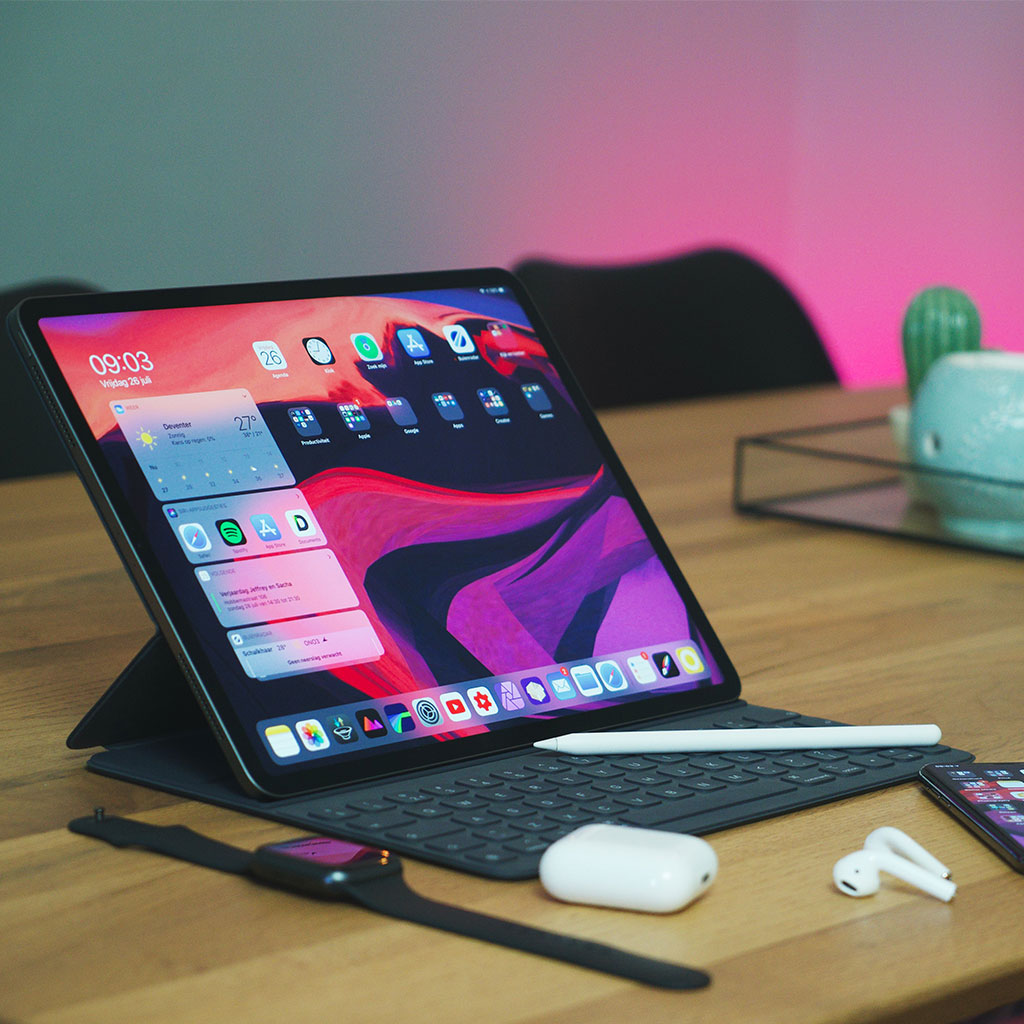How to connect Apple keyboard to iPad
How to connect Apple keyboard to iPad
Connecting an Apple keyboard to your iPad can enhance your typing experience and productivity. Here’s how to set it up.
Unleash the power of your Apple keyboard by seamlessly connecting it to your iPad!
To connect an Apple keyboard to your iPad, follow these steps:
- Check Compatibility: Ensure that your iPad and the Apple keyboard are compatible. Most modern iPads can connect to both wireless and wired Apple keyboards. For the 3rd generation iPad Pro (11-inch) and iPad Pro (12.9-inch), you’ll need a USB-C port on your keyboard, while earlier iPads may require a Lightning port.
- Place the Keyboard in Pairing Mode:
- Wireless Keyboard: If you’re using a wireless keyboard, ensure it’s turned on. For most models, press and hold the power button until the green light starts blinking, indicating it’s in pairing mode.
- Wired Keyboard: If you have a wired keyboard, simply connect it to your iPad using the appropriate adapter (Lightning to USB for older iPads or USB-C to USB-C for newer ones).
- Open Bluetooth Settings on iPad:
- On your iPad, go to Settings > Bluetooth.
- Ensure Bluetooth is turned on. Your iPad will start searching for nearby devices.
- Pair the Keyboard:
- In the list of available devices, locate the keyboard. It should appear as “Apple Keyboard”.
- Tap on it to start the pairing process. Follow any on-screen prompts to complete the connection.
- Test the Connection:
- Once successfully connected, open an app that requires text input (like Notes or Pages) and try typing. The text should appear on the screen as you type on the physical keyboard.
Remember, you can adjust settings for the keyboard in the iPad’s Settings under General > Keyboard. Here, you can modify options like Auto-Capitalization, Auto-Correction, and more to suit your preferences.
Are there any specific settings I need to adjust on my iPad after connecting the keyboard?
After successfully connecting a wireless keyboard to your iPad, there are a few settings you might want to adjust to ensure a seamless typing experience. First, navigate to your iPad’s settings and locate the “General” tab. From there, tap on “Keyboard.” In this menu, you can customize various options, such as enabling or disabling auto-capitalization, auto-correction, and spell check. Additionally, you can set the behavior of the hardware keyboard, including whether you want it to automatically show the software keyboard when needed. Adjusting these settings will help you tailor the typing experience to your preferences, making it feel more natural and efficient.
For iPad models with a USB-C port, like the iPad Air 3rd generation, connecting a wired keyboard may require the use of an adapter. Once the wired keyboard is connected, there are no additional settings within the iPad itself that need adjustment. The device should recognize the external keyboard automatically. Keep in mind that using an external keyboard provides a more traditional typing experience, bypassing the need for the onscreen keyboard. This can be particularly beneficial for tasks that involve extensive typing, as it allows for faster and more accurate input. If you want to further customize the keyboard experience, you can explore keyboard shortcut options in specific apps or utilize modifier keys for tasks like accessing the app switcher or adjusting the volume.
What should I do if I encounter any issues during the connection process?
If you encounter any issues during the connection process of your wireless keyboard to the iPad, there are a few troubleshooting steps you can take. First, ensure that your wireless keyboard is turned on and in pairing mode. Some keyboards have a dedicated button for pairing, while others may require a specific key combination. Make sure the keyboard is within a reasonable range of the iPad and that there are no obstructions interfering with the signal. If you’re still having trouble, try restarting both the keyboard and the iPad. Additionally, double-check that the keyboard is compatible with the iPad model you’re using, especially if you have a newer generation iPad with a USB-C port.
For wired keyboards, particularly when using an adapter with a USB-C port like on the iPad Air 3rd generation, ensure that the adapter is securely connected to the iPad. If the keyboard still isn’t recognized, try using a different USB port on the adapter, as sometimes one port may be faulty. Make sure the keyboard is in working condition by trying it with a different device. If it works on another device, then the issue may be related to the connection between the iPad and the adapter. If none of these steps resolve the problem, it’s advisable to consult the user manual for your specific keyboard model or contact the manufacturer’s support for further assistance.





You must be logged in to post a comment.